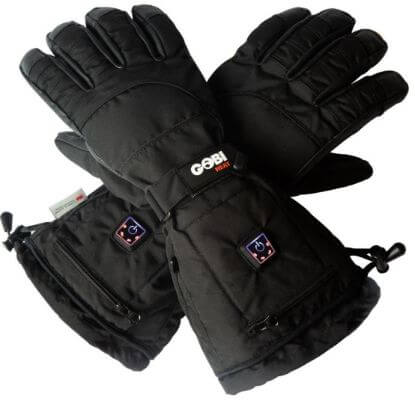Heated clothing has gained popularity in recent years as a solution to staying warm in cold weather. These innovative garments incorporate heating elements to provide extra warmth and comfort in outdoor activities. While heated clothing offers undeniable benefits, it’s important to consider its environmental impact.
In this blog post, we will explore the environmental implications of heated clothing, including energy consumption, materials used, and potential sustainability measures to minimize its ecological footprint.
Energy Consumption
One of the primary environmental concerns related to heated clothing is its energy consumption. Heated garments require a power source, usually a rechargeable battery, to generate heat. These batteries need to be charged frequently, resulting in energy consumption that contributes to carbon emissions and the depletion of natural resources.
To mitigate this impact, it is crucial to choose heated clothing brands that prioritize energy efficiency. Look for garments with intelligent heating systems that regulate and optimize power usage. Additionally, consider using portable solar chargers or other renewable energy sources to charge the batteries, reducing reliance on fossil fuels.
Materials and Production
The materials used in the manufacturing of heated clothing can also have environmental implications. Some heated garments are made from synthetic fabrics that require significant energy and resources to produce. Furthermore, the production of these materials often involves the use of chemicals and contributes to pollution and waste.
To minimize the environmental impact, opt for heated clothing made from sustainable materials. Look for brands that use organic or recycled fabrics and employ eco-friendly manufacturing practices. Choosing garments with durable construction will also extend their lifespan, reducing the need for frequent replacements and decreasing overall waste generation.
Product Lifespan and Disposal
The lifespan of heated clothing and its disposal at the end of its usable life are important considerations. Extending the lifespan of these garments reduces the demand for new products and reduces waste generation.
When purchasing heated clothing, choose well-made, durable garments that are designed to withstand regular use and last for several seasons. Follow proper care instructions to maintain their performance and longevity. Consider brands that offer repair services to fix any issues that may arise, further prolonging the lifespan of the garment.
Proper disposal of heated clothing is essential to minimize its environmental impact. Check if the brand offers recycling or take-back programs for their products. If these options are not available, donate the clothing to organizations or individuals in need, ensuring it continues to be used rather than ending up in landfills.
Sustainable Innovations
In recent years, there have been advancements in sustainable heated clothing technology. Some companies are exploring alternative heating methods, such as using conductive fabrics or incorporating energy harvesting technologies. These innovations aim to reduce energy consumption and minimize the environmental impact of heated clothing.
Support brands that invest in research and development of sustainable heated clothing solutions. By choosing products from companies committed to minimizing their environmental footprint, you contribute to the growth of sustainable technologies in the industry.
Education and Awareness
Promoting education and awareness about the environmental impact of heated clothing is crucial. Consumers should understand the consequences of their choices and be empowered to make sustainable decisions.
Share information about the environmental implications of heated clothing with others. Encourage discussions about sustainability and responsible consumer choices. By raising awareness, we can collectively push for more eco-friendly practices and drive change in the industry.
Conclusion
Heated clothing provides warmth and comfort in cold weather, but its environmental impact should not be overlooked. To balance warmth and sustainability, it is essential to consider energy consumption, materials used, product lifespan, and disposal practices.
Choose heated clothing brands that prioritize energy efficiency, sustainable materials, and responsible manufacturing processes. Opt for durable garments, extend their lifespan, and explore recycling or donation options at the end of their usable life. Support companies investing in sustainable innovations in the heated clothing industry.
Ultimately, by making conscious choices and advocating for sustainable practices, we can minimize the environmental impact of heated clothing. As consumers, we have the power to drive change and support brands that prioritize both warmth and sustainability.
Additionally, it’s important to remember that heated clothing is not always necessary in all situations. Consider alternative methods to stay warm, such as layering clothing, using insulated accessories, or utilizing natural heat sources whenever possible. By reducing our reliance on heated clothing, we can further reduce our ecological footprint.
In conclusion, while heated clothing offers comfort and warmth in cold weather, it’s crucial to be mindful of its environmental impact. By considering energy consumption, materials used, product lifespan, and disposal practices, we can make sustainable choices that align with our values. Let’s prioritize brands that embrace energy efficiency, sustainable materials, and responsible manufacturing practices. Together, we can enjoy the benefits of heated clothing while minimizing our impact on the environment.

For over 12 years, I have been testing and reviewing heating technologies that overcome cold weather conditions. In recent years, I have specialized in the heated apparel. I’ve made it my mission to educate people about heated clothing.
